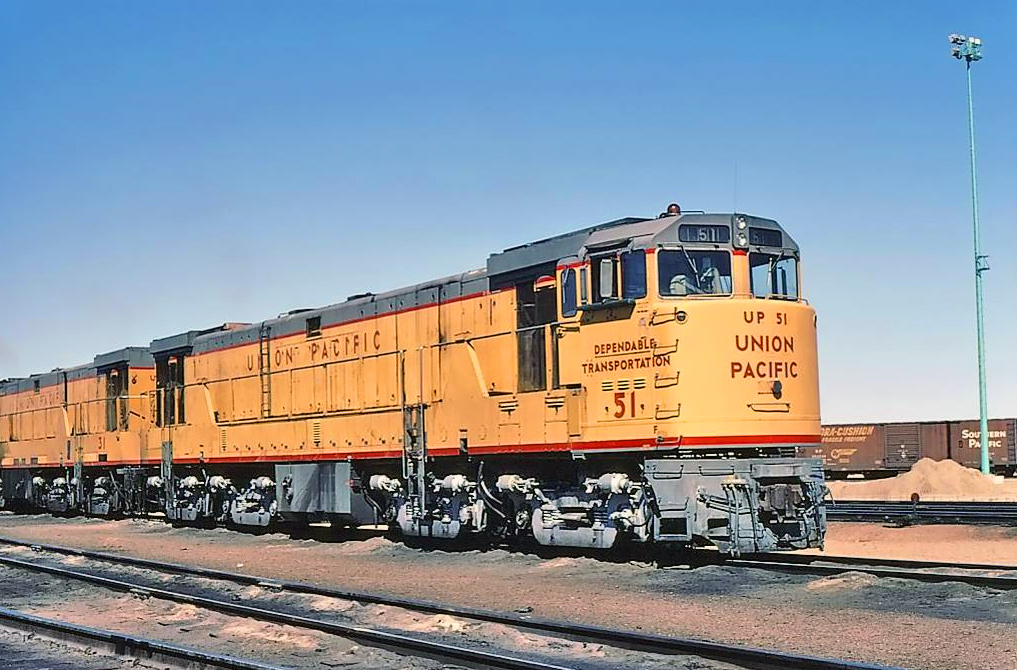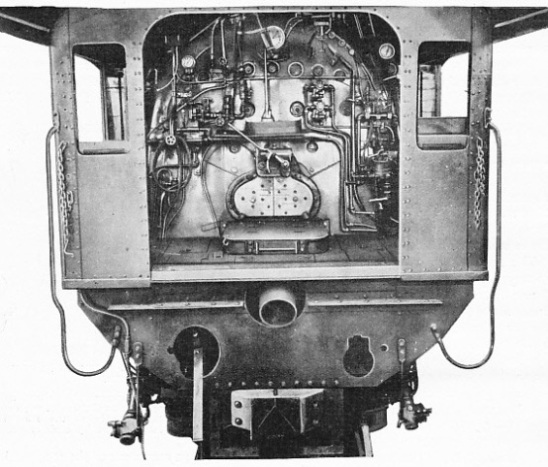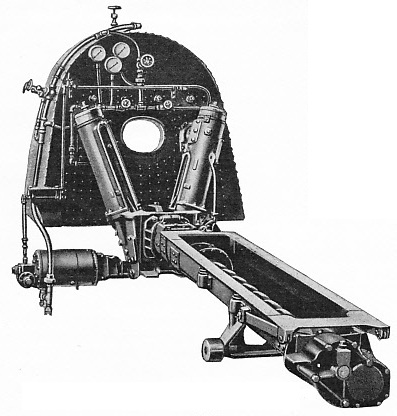The "other guys" also had some units that they offered but no one took advantage of.
Alco PA-3: While typically just called an Alco PA, there were actually two versions, a 2000hp V16 244-powered PA-1 and a 2250hp V16 244-powered PA-2. The PA-3 was cataloged in 1954 and going to run the 2400hp 244H out of the RSD-7, which Alco called a 250 engine, to try and distance itself from the early 244's bad reputation (the 251 engine was actually in production by this point, but the 2400hp version wouldn't arrive for a couple years). This would have made the PA-3 a real hot rod, since they were much lighter than an EMD E-unit by only running one V16 engine and one generator, as compared to the E-unit's two V12s and 2 generators. The Alco PA was also cheaper because of the reduced number of parts, and used less fuel. It was just the reliability woes that kept the PA from being the sales leader. Sadly, by the time Alco marketed the PA-3, railroads were increasingly weary of Alco and were retiring their PAs or downgrading them to freight service, and so no one purchased any PA-3s.
Alco C620: All of the Alco 6-motor Centuries that people are familiar with were big, heavy, high-horsepower maulers. But Alco did actually catalog a C620, which was the popular 2000hp C420 but with C trucks under it. The low horsepower 6-axle market was not a particularly strong one at the time, with EMD only selling 52 2000hp SD38s and 54 2250hp SD39s and GE only moving 53 of their 2300hp U23Cs, so it makes sense that Alco, who was third in sales, failed to sell any C620s.
Alco C624: The C624 was actually supposed to be one of the original Century line models. Alco had always banked on the fact that they outpowered the competition, but by the time the Century line rolled out, EMD had finally gone the way of turbochargers and was making equal power numbers, and GE jumped into the market with their turbocharged 4-stroke engines that matched Alco on power as well. Alco killed the C624 off before they sold any, and then cranked the horsepower up to make the C628. Realistically, the C624 probably would have been a better seller in the long run, as the C628 was just too big and heavy for its own good. Railroads that had beefy enough infrastructure to support them loved them, but they scared off a lot of other buyers.
Alco C636F/C636P: During Santa Fe's brief fling with cowl units, Alco also tried to get in on the action. They proposed a cowl-bodied C636 that could be used for passenger or freight use. By this time though, Alco was fully circling the drain and the regular C636 had failed to really impress any buyers, particularly Southern Pacific where the C636 demonstrator burned up a traction motor on three of its four test runs. Nobody wanted to get stuck with troublesome units from a manufacturer that had one foot in the grave, and so they remained a curious footnote. There are blueprints which have allowed artists to conjure up images of what if things had turned out differently.

Alco DH650: Listed in a catalog from late in Alco's life, the DH650 was an update of the diesel-hydraulic DH643. This unit supposedly would have replaced the twin 2000hp 251C V12s with two 2500hp engines. But by this point the hydraulic drive experiment was pretty much over. The Krauss-Maffei ML4000s were marching their way off to the scrapyards and the three DH643s weren't much farther behind them.
Alco C860: This one's existence is a bit more debated, but there are those who swear it was actually offered. Again, this was just an upgrade of the massive C855s that Alco had built for Union Pacific. The 2750hp V16s from C628s were swapped out for 3000hp V16s from C430/C630s to make an additional 500hp. Union Pacific had never been very enthused with either Alco's C855 or GE's U50Cs and U50s, so its not surprising that they passed on a C860.
Bombardier HR series: Bombardier scooped up what was left of Alco and Montreal Locomotive Works in the '80s and tried to hop into the locomotive market. They did produce an HR412 (a wide-cab, 2400hp 251-powered B-B road switcher) and an HR616 (a cowl-bodied 3000hp C-C road unit), but those were only two of the cataloged 5-model lineup. The other three were the HR416 (A 3200hp B-B road switcher), HR618 (A 3600hp C-C road switcher), and the HR406 (A 1200hp switcher). All but the switcher had the Canadian comfort cab and included cowl options, and like the HR412, the HR416 could be equipped with HEP. But reliability issues with the HR412 and HR616 turned off prospective buyers and so none of the other models were ever constructed.

GE U18BT/U15BT: Alongside the U18B "baby boat", GE offered a version that was supposed to be an end-cab switcher/transfer unit. There was also a U15BT, that was downrated to 1500hp to compete with EMD's MP15DC/MP15AC. By this point, EMD had had the switcher market all to itself for years and it was going to be tough to get a foothold. GE failed to attract any buyers of the U18BT and U15BT, and the U18B itself wasn't a real sales success either.
GE B18-7: Even after the cool reception to the U18B "Baby Boat", GE fully planned to offer a 4-axle Dash-7 locomotive with the unique 1800hp 8-cylinder FDL engine. But while it shows up on the catalog the for Dash-7 locomotive line, nobody purchased any. The big issue was that the U18B and B18-7 were aimed at branch line usage, and that's never been a strong market. Railroads just don't want to plonk down cash for shiny new locomotives to operate on branch lines and their typically low profit margins. They'd rather just relegate older engines to that service. GE learned the lesson and did not offer an 1800hp Dash-8.
GE U56: Similar to Alco's proposed C860, GE planned to sell a U50 with the engines uprated to 2800hp each by applying the same tricks to them that they had used to convert the U25B to the U28B. In fact, GE and UP are said to have done this to one of the U50s that UP already owned as a feasibility test, but it was later downrated back to 5000hp. But the U50s were just too big and heavy for even UP, and they also had some reliability issues, so UP never purchased any, nor did SP, who owned 3 U50s as well.

GE B40-8(B): Santa Fe actually ordered some cabless B40-8 booster units from GE to go with their GP60Bs. But when GE told them that the B40-8(B)s were actually going to cost more than a regular B40-8, Santa Fe had the order converted to conventional B40-8s.














































